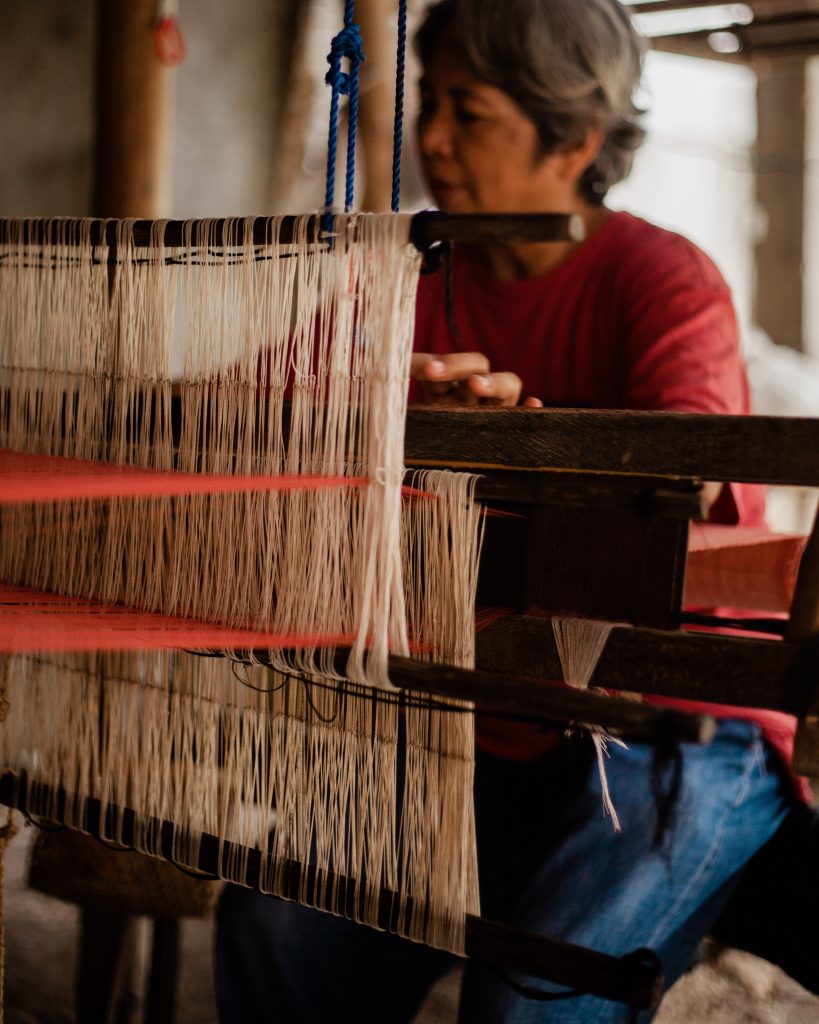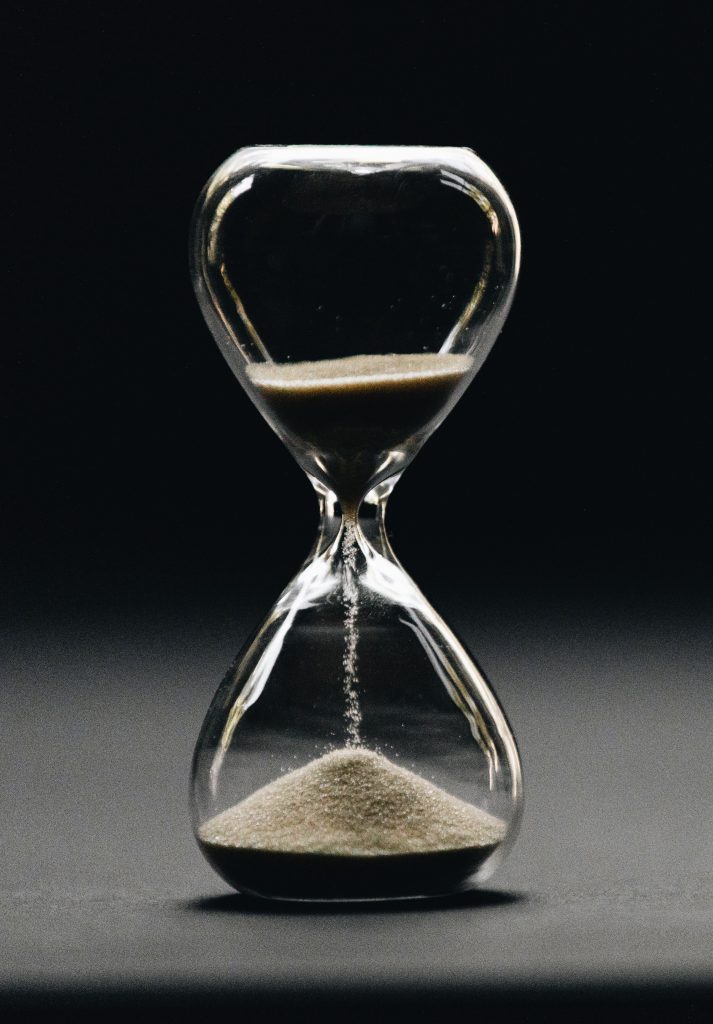“Weaving the Tapestry” Scientific Writing – Part 3
In two previous posts (which you should read first!), I described introduced the idea of science writing as storytelling, and I explored two traits of effective writers. In this blog, I want to dive a bit deeper into the structure of scientific papers, how scientific papers document evidence that can contribute to our emerging understanding of “how the world works” (the goal of science). I will do this by discussing the purpose of different sections of an APA style paper1.
The Structure of Scientific Writing
Introduction: The first part of a scientific paper is called an introduction (though the label may not appear on the paper itself). The introduction sets the stage for the science story. Here, the writer needs to frame the story by drawing from and connecting previous theory and research to the specific research in the paper. The framing of the story will be relatively big, but throughout the introduction the writer will consistently narrow in on the specific thread of the story that they are going to weave with their study.

I like to think of the introduction as an upside-down triangle. The beginning of the intro lays out the big ideas: what is at stake and what ideas are on the table. But, as the reader (and writer) progresses through the introduction, the big ideas need to be narrowed to the realm of hypothesis. The whole science story (our discovery and construction of the way the world works) is like a giant tapestry in-progress. The whole section of the tapestry, when you step back to look at it, is the top of the upside-down triangle. (The WHOLE tapestry is the whole of human knowledge. Imagine zooming into a relatively large section of the tapestry where you can still see images and chunks of the tapestry’s story, without seeing individual threads. This section is the “whole” tapestry that the top of the upside-down triangle shows.) But individual research studies can’t deal with the whole tapestry, so throughout the introduction the reader starts to look closer at a specific part of the tapestry that is under construction. There are lots of threads here. The hypotheses of the research study, presented at/near the end of the introduction, is a zoomed-in view of one (maybe two) of these threads. The research is going to pull on these threads to see if they fit this way or that way. The individual research study is at this zoomed-in view, but the view itself won’t be meaningful without the larger picture.

In an attempt to be explicit about my metaphors2, the individual threads of the hypotheses are the very bottom point of the upside-down triangle where the plotline of the story is unfolding (scientific plot = discovery).
In this way, the introduction absolutely has the flavor of a plot. You first set the scene, then you carefully guide your reader to pay attention to some (but not all) of the scene3. Importantly, the introduction also sets the stage for the drama of the plot, as in, “Look at all these things we know and, yet, we still cannot say with certainty how this thread fits into the tapestry. This is why my research study is needed.”
Method: The method section is critical in the scientific story because this is where the writer starts to lay out their process for pulling the strings of the tapestry. When researchers clearly describe how they collected their data, who provided the data (in the case of human sciences), when the data were collected (etc.), then the readers have sufficient description of the process to evaluate the data that these methods and participants produced4.
One of the things that makes psychology and the other social sciences so interesting (and difficult) is that the subject matter—people—are really complex. There are so many influences on human thinking and behavior, more influences than could ever be fully accounted for in any individual research study. Thus, the goal is not to measure absolutely everything, but to measure the most important things and to account for influences on how the data are produced and understood. The introduction will have brought all of these relevant influences on the table; here the science story slows down in order to really lay out the details of the process. If we return to the upside-down triangle/tapestry metaphor, the method and results sections are smaller still, zooming in to the smallest point of that triangle, examining the tapestry at the level of the thread content and composition of this particular section of the tapestry.
If this individual research study is going to be added to the tapestry that the science story is a part of, it needs to be clear how and why the strings of the tapestry were pulled and prodded the way they were.
Results: The results section is where the author presents their scientific story in the language of math (and statistics)5. Results sections should be written without interpretation. They are designed to be a straightforward depiction of the statistical procedures and ensuing numbers. For example, “A 2 (book vs. video) by 2 (male vs. female) analysis of variance was conducted…” describes an analytic method that compared two conditions (book and video) across two genders (male and female), both of which are being treated as independent variables. The test will look at how males and females in the separate conditions of book or video scored on some dependent variable (unnamed in this example). The report would also provide the inferential statistics (e.g., t-test or, in the case of an ANOVA an F-statistic) and p-value. Let’s say that there was a statistically significant difference (i.e., p < .05) between how people responded to book versus video in this fictitious example6, the author would simply note that in a statistics sentence without interpreting the meaning of such a finding (e.g., “When exposed to books, problem-solving was higher (M = 5.67, SD = 1.21) than when exposed to videos (M = 2.12, SD = .34), F(1, 34) = 5.93, p < .05.)7 The implications of the higher problem solving scores for books compared to videos would not be interpreted here.

Discussion: The discussion section starts with a rephrase of the results in plain English (or whatever language the paper is being written in). Take all the t-tests, ANOVAs, and multiple regressions and translate them here, omitting the statistical language. So, we might say, “Problem solving improved after exposure to books compared to videos” as a straightforward rephrase of the (fictional) test reported above. In one or two paragraphs, the key findings from the results section will be presented. This serves a few purposes. First, it helps your reader through the weeds of the analyses (especially those who skimmed it). Second, it prepares your discussion by providing a key opportunity to frame it. Throughout the discussion, the key findings will be discussed beyond what they are and extended to what they mean. Really, the discussion is the reversal of the triangle from the introduction section. The discussion turns the whole paper into an hourglass shape8.
In the discussion, the key ideas introduced in the introduction get connected to the specific findings. Implications for the broader tapestry of the science story are addressed here. This is where the writer draws final connections and communicates the importance of this research story. When we know that these strings of the tapestry do that, what does that mean? How does (if it does) change our understanding of the neighboring tapestry strings? Do we have to rethink our reinterpretation of the tapestry at all, because of these findings? Does it extend our understanding in any way? Any one research paper won’t do all these things, but it will do something. This is where the writer helps the reader understand what, exactly, has been done in this paper.
Importantly, the discussion section also highlights what this research does not do. Every study has limits and leaves open questions (either new questions or questions that remain unanswered or unclear). This section is not a trivial place to say, “we should have had a larger sample”, but a place to really wrestle with what we do and don’t know about our science story. It is also a great place to set up the next science story to help us figure out this particularly tricky part of the tapestry. Remember that good science writers are interested in improvement (growth mindset) and are genuinely curious about why things work the way they do. This means that they will not manufacture limitations where they do not exist, nor will they minimize limitations that do exist.

The Beautiful Tapestry
In this blog, I intended to provide a big picture framework for an individual paper; what the goals of the various paper elements are and how to think about their structure. I used the metaphor of scientific writing as the vehicle by which individual scientific studies weave small bits of a (very large) tapestry of knowledge. This is an important start, but still a bit vague on some of the details. (How do you weave?!) In blogs to com, I’ll start to unpack some specific things that I do in my own writing. It is my hope that by walking you through my example you will have the opportunity to duplicate, modify, or generate new practices that will help you develop into a better writer.
For now, I want to hear from you: what parts of writing do you enjoy the most? What do you most loathe? Leave a comment below!
_________________________________
1An “APA Style Paper” is a paper that is constructed according to the guidelines published by the American Psychological Association. APA style refers to the specific conventions (e.g., how to format citations) and to a style of writing. Here, I am not particularly interested in the formatting issues, but more so in the goals of the writing. These goals are shared across many scientific disciplines, even if the specific formatting style varies.
2As all members of my family, and many of my students, will attest, metaphors, idioms, and other similar language mechanisms are not my strong suit. And yet, here I am, working on my weaknesses…
3One important difference between a well-written fiction story and a scientific story is that fiction is exciting because of what is left out, what is left to the readers’ imagination. Fiction authors take advantage of allowing their readers to fill in the blanks in powerful and (often) personal ways. Science stories do not leave these same kinds of blanks. Although scientific stories have to be selective about what is included (thereby omitting some details), the goal is not to have readers fill in the blanks. One of the functions of peer-review is to ensure that important parts of the scene have not been ignored or omitted. The goal is for readers to clearly see all that is involved. Where there may be “fill-in-the-blanks” ideas, science stories will include citations for their readers to complete those omissions in a way that is consistent with previous research.
4Remember from Part 1: science stories are built on verifiable and compelling evidence. “Trust me, I’m a doctor” just won’t work.
5There are, of course, exceptions to this rule (i.e., qualitative research). However, the language of the results does change to reflect the actual analysis of the data, whatever those data are like.
6To connect this to methods language: a finding that there was a difference in books vs. videos on the dependent variable would be an example of a main effect; we could say that there is a main effect of media (book vs. video) on the dependent variable.
7The numbers in this example statistic sentence are totally made up. However, from this sentence the reader can discern important information about the main effect of the independent variable (book vs. video) on the dependent variable (problem-solving). How these variables were operationalized and measured would have been described in the method section.
8See the image about science papers and hourglasses here: https://www.researchgate.net/figure/Framing-a-scientific-paper-The-structure-of-a-paper-mirrors-that-of-an-hourglass_fig1_307014555 If you are feeling ambitious, read the paper that it comes from, also available at this link.
If you found this blog helpful, check out the overview of the whole series here, so that you can find more useful information to develop your writing.

25 Comments
Thank you for providing us the very useful and relevant tool. I would like to encourage my BEH 383 studdents to read this blog as they are learning how to write a scientific research paper (4 elements according to AERA) — intro — method — results — disucssion! Yes, the study goal should NOT be measuring “absolutely everything, but to measure the most important things and to account for influences on how the data are produced and understood” — Students sometimes try too much in a single research project to answer ALL** — I have done that too, and learned my lesson.
I learn this lesson each time I design a research project (ha!). There is no one-study-to-answer-it-all, but–if thoughtful–my single study can contribute a meaningful part of the overall (developing) story. Thanks for sharing, Dr. Walker!
I really liked your visual of an upside down triangle. How the introduction starts out broad, and as you continue through the paper it starts to turn into a fine, narrow, tip. Your imagery of a tapestry being woven together shed scientific papers into a rather beautiful light, rather than the shadowy, daunting things I originally believed them to be.
Scientific papers as shadowy and scary?! Only sometimes. Really, science is the study of this natural world that God has put us in. That is truly beautiful…all the way down to the molecules (and quarks, and other crazy stuff that make up this world).
I really love how you describe the organization of a research essay as a tapestry because it is so important that all the parts work together to create and support the thesis. I think that the results section is often hard for me because of all the scientific lingo! Sometimes dealing with complex psychology statistics can be overwhelming and confusing for me, but I am trying to learn how to get better at that. Great article!
Katie: yes, the results takes a lot of practice. It’s okay to struggle–it’s part of the learning process. I think that keeping the big picture reasons in mind (i.e., what the point of all those numbers IS!) is a helpful way to get to the other side.
Thank you for your visualization of the upside-down triangle; implementing and organizing a paper makes the overall process have more structure. The part of writing that I enjoy the most is the connection that the introduction and the results have. Putting it all together with evidence and the correlation of how the hypotheses are supported or not supported and its reasoning is very informative. Now, what I do not really enjoy when it comes to my writing is when I do not see much correlation with what I want my paper to state to what it actually tells. The triangle is a good example of ways to avoid this and stay with a specific structure to stay organized.
The ability to connect big ideas to the specifics of your research question is so important. Each sentence (and paragraph) should all be narrowing to your contribution. Having this visual as a conceptual overlay of your introduction (and then inverse in the discussion) is helpful in determining whether you should say something or not (i.e., it might be interesting, but not relevant to the overall point you are narrowing toward).
The part that I enjoy the most about writing is when I get my flow going. I like when I am fully into what I am writing and get to a point where I am excited to read the final product. I usually struggle starting my papers so that is where I do not enjoy writing. I agree with how satisfying the organization of writing is!!
Overall this was super fun to read (:
Love this, Hailey! Thanks for sharing!!
Thank you Dr. Smith for your fun imagination on comparing scientific writing to weaving tapestry! Thinking of scientific writing as an art form such as tapestry never occurred to me until now. Being a visual person, the images you shared such as the photograph depicting the neutral, earth-like toned tapestry weaved with geometric shapes makes me think of scientific writing almost like a story. It is as if we are meant to tell a story using the data that is available. When I take time to think about it, the part of writing that I dislike the most is simply starting. I do not do well with a blank sheet of paper, but it’s ironic that I say this because once I start writing and get into the zone, it becomes difficult for me to stop. Thank you for sharing your insightful thoughts on the art of weaving writing!
Thank you so much for sharing, Ruby! Science absolutely involves storytelling, if it will be effective. The WAY that we tell stories is different, but it’s so important! Glad you appreciated the visuals, too! Hope they stick with you and benefit your writing.
Hello Dr. Smith,
Coming from your previous blog post, it was so interesting to me how step by step this blog series is about scientific writing! It was very fascinating how you describe the association of research writing to that of a tapestry. Weaving together details and information so it connects together in harmony. The parts of writing that I enjoy the most is conducting my own survey and implementing it into my writing. What I have trouble with is the statistics aspect to the research, but I am working on mastering this skill, so I become more comfortable with it!
I look forward to reading the next part!
Love that “you’re working on it!” Aren’t we all??!! Everything can improve with practice, critique, and revision. Growth is always possible 🙂 Love to see your investment in your own growth!
Writing reports seems daunting and as though the task will never be started or finished. Your tapestry imagery is helpful, because a) they consist of distinct and vital pieces, b) the work takes effort and follow-through, and c) the desire to give up is strong, but we can’t risk letting go of what beautiful work might come from this. Thank you for the reminder, it helps me remember to be thoughtful in my work!
That’s great! And sometimes flaws in tapestries can teach us things, but when we step back, we can see so much progress and beauty. Do look closely at your work, but don’t forget to step back, too.
I hate scientific writing. Actually I hate any non-fiction writing. I want to create something that doesn’t exist like sirens or unicorns. Not analyze why an author made curtains blue or why people who play video games may or may not be more violent than those that don’t. I think analytical or research writing, while important, is bland and boring.
Dr. Smith,
I appreciate you writing this and I wish I had this from day one of my BEH sequence. It took me a long time to figure out we were doing and what the end project would look like. Even now I was a little lost. This break down of each piece really helped me understand and visualize what I’m working toward and what the end product will look like. I think the discussion part of writing is my favorite part as you get to analyze and put your scientific thoughts and opinions to it. Thank you.
Dr. Smith
Sometimes looking at a research paper in its entirety can be so overwhelming. I know many students in the beginning stages of the BEH sequence feel like this, because I remember I did! I hope they can stumble across your writings in some way. In any case, my favorite part of writing so far is understanding the results, as we are in the midst of conducting the surveys we worked very hard on as researchers we are able to see the responses. It is both gratifying and scary all at once.
Absolutely!! Research is “hard won” (I’m not sure if that’s a phrase), but it should feel good to get to the end….and exciting to see all the questions that the “end” opens up. The world we inhabit is so cool. Applying research methods to enhance our understanding of it is a gift from God!
So glad to hear this…Better late than never!!
Hi Dr. Smith,
I cannot begin to explain how much I appreciate this specific blog post, when I wrote my introduction for my research in BEH290 I believe, I will admit I was a bit confused on what exactly was the correct way to write a scientific paper and what exactly went in each section. Your explanations are so helpful and I have previously stated in my other comments on your previous posts, I will definitely be revisiting your blog when I need the assistance and the extra push.
So glad this was helpful!
Thank you for composing this blog entry. Writing research papers have always been hard for me. Scientific writing is tough and I feel like I am better at fictional writing. The breakdown you provided in this entry really helped to explain things and slow them down.
Glad you found this helpful!